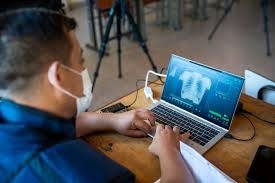Tuberculosis : Resurges Worldwide

Tuberculosis resurges worldwide as Trump’s funding cuts disrupt global treatment programs, threatening progress and increasing infection rates.
- Tuberculosis (TB) is an infectious disease caused by bacteria that most often affects the lungs. It spreads through the air when people with TB cough, sneeze or spit.
- About a quarter of the global population is estimated to have been infected with TB bacteria. About 5–10% of people infected, eventually get symptoms and develop TB disease.
- Those who are infected but free of disease cannot transmit it. TB disease is usually treated with antibiotics and can be fatal without treatment.
- Symptoms: Active TB symptoms include a persistent cough lasting over two weeks, chest pain, coughing up blood or sputum, fatigue, weakness, loss of appetite, weight loss, chills, fever and night sweats.
- TB is preventable and curable.
- TB is treated with a standard 6-month course of 4 antimicrobial drugs that are provided with information, supervision and support to the patient by a health worker or trained volunteer.
Multidrug-resistant TB (MDR-TB) - Drug resistance emerges when TB medicines are used inappropriately, through incorrect prescription by health care providers, poor quality drugs, or patients stopping treatment prematurely.
- MDR-TB is a form of TB caused by bacteria that do not respond to isoniazid and rifampicin, the two most effective first-line TB drugs. MDR-TB is treatable and curable by using other drugs, which tend to be more expensive and toxic.




